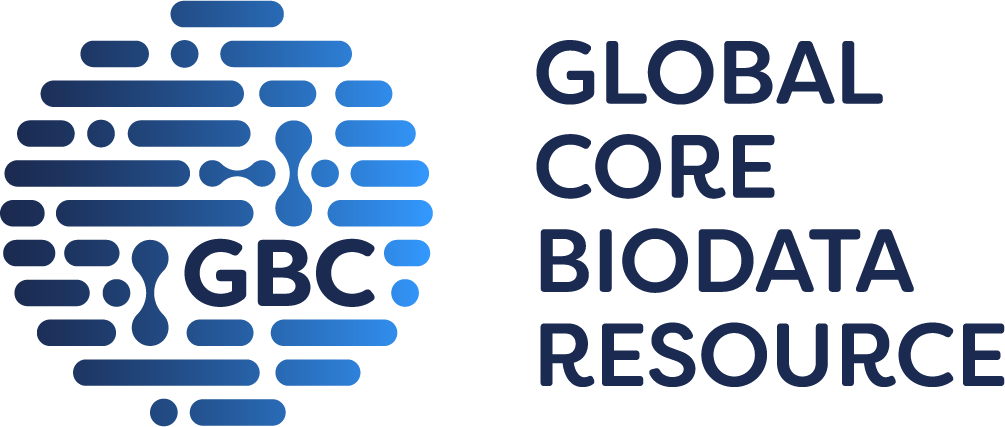normal phenotype
|
• mice do not exhibit differences in behavior, motor function or body weight
|
 Analysis Tools
Analysis Tools|
Allele Symbol Allele Name Allele ID |
Tg(Gfap-cre)73.12Mvs transgene insertion 73.12, Michael V Sofroniew MGI:3522215 |
||||||||||||||||||||
| Summary |
4 genotypes
|
|
|
| ♀ | phenotype observed in females |
| ♂ | phenotype observed in males |
| N | normal phenotype |
|
• mice do not exhibit differences in behavior, motor function or body weight
|
|
|
| ♀ | phenotype observed in females |
| ♂ | phenotype observed in males |
| N | normal phenotype |
|
• at P28, thalamocortical synapses show a significant decrease in the number of synaptic vesicles within multisynaptic boutons, with no change at monosynaptic connections
|
|
• mice show abnormal glutamatergic synapse maturation and stabilization in the developing visual cortex (VC) during the critical period of synapse maturation
• at P28 (peak of the critical period), thalamocortical synapses within the primary VC show structural immaturity whereas intracortical synapses show functional immaturity with reduced incorporation of GLUA2 subunits into AMPA-type glutamate receptors (AMPARs)
|
|
• by P120, intracortical synapses exhibit normalized VGLUT1and GLUA2 puncta numbers and colocalization of VGLUT1 and GLUA2 in L1 and L2/3, while thalamocortical synapses show restored VGLUT2 puncta volume in L1 and L4, indicating recovery from the synaptic alterations detected at P28
|
|
• at P28, thalamocortical synapses show a ~40% decrease in the volume of VGLUT2 puncta in layers L1 and L4 of the VC, indicating smaller presynaptic terminals
• analysis of thalamocortical axons in L4 shows that the average terminal volume of presynaptic boutons is significantly reduced, driven by a significant decrease in the volume of multisynaptic boutons, with no change in the volume of monosynaptic connections
• moreover, both the average number of postsynaptic partners at a multisynaptic bouton and the maximum number of synapses observed at a single bouton are increased
|
|
• at P28, L4 thalamocortical synapses show a shift in dendritic spine morphology toward a more immature state at monosynaptic, but not at multisynaptic, connections
• in contrast, L2/3 pyramidal neurons consisting of predominantly intracortical synapses show no gross abnormalities in dendritic spine structure at P28
|
|
• at P28, L4 thalamocortical synapses show a significant decrease in the % of mushroom dendritic spines at monosynaptic connections
|
|
• at P28, L4 thalamocortical synapses show a significant increase in the % of thin dendritic spines at monosynaptic connections
|
|
• at P28, thalamocortical synapses in L4 show a decreased postsynaptic density (PSD) surface area and more postsynaptic partners at multisynaptic connections
• decrease in PSD surface area is seen at dendritic spines opposed to both monosynaptic and multisynaptic boutons
|
|
• at P28, intracortical excitatory synapses within the VC show a deceased protein level of GLUA2 (a postsynaptic marker for mature synapses) specifically in layers L2/3: colocalization of GLUA2 and VGLUT1 (a presynaptic marker for intracortical synapses) in L2/3 is reduced by ~30%, driven by a decrease in GLUA2 puncta in L2/3 but not in L1; however, no change is noted in the number of presynaptic VGLUT1 terminals, number of postsynaptic GLUA1 puncta (immature synapses) in L1 or L2/3, or in the colocalization of GLUA1 and VGLUT1 in either layer
• at P28, thalamocortical excitatory synapses within the VC exhibit a ~40% decrease in the volume of VGLUT2 puncta (a presynaptic marker for thalamocortical synapses) in both L1 and L4; however, no change is noted the number of presynaptic VGLUT2 terminals, colocalization of VGLUT2 with postsynaptic GLUA1 or GLUA2 in L1 or L4, or in the number of GLUA1, GLUA2 or VGLUT2 puncta in either layer
• analysis of thalamocortical axons in L4 indicates that thalamocortical synapses are structurally immature, with smaller presynaptic boutons, decreased postsynaptic density area, and more postsynaptic partners at multisynaptic connections
• AAV2/5 mediated HA-GPC5 overexpression in VC astrocytes is sufficient to increase the total level of GLUA2 in L2/3 intracortical synapses, without impacting VGLUT1 puncta number or colocalization of VGLUT1-GLUA2 in L2/3
• however, overexpression of GPC5 in L4 thalamocortical synapses has no impact on VGLUT2 terminal volume
|
|
• mice show enhanced ocular dominance plasticity in response to visual deprivation in adulthood: when monocularly enucleated (ME) at P120, mice show a significant increase in the width of the Arc zone at 5 days after ME relative to 12 h after ME (baseline innervation); moreover, the width of the Arc zone after 5 days of ME is significantly larger than that in wild-type controls
• however, no change in large-scale ocular dominance plasticity is detected when ME is performed at P28 (during the critical period)
|
|
• at P28, whole-cell patch clamp recordings from L2/3 pyramidal neurons in acute slices of the primary visual cortex show that AMPA-mediated spontaneous excitatory postsynaptic currents (sEPSCs) are significantly reduced in amplitude
• however, no major change is noted in the sEPSC interevent interval, 10%-90% rise time or decay time
|
|
• at P28, thalamocortical synapses show a significant decrease in the number of synaptic vesicles within multisynaptic boutons, with no change at monosynaptic connections
|
|
|
| ♀ | phenotype observed in females |
| ♂ | phenotype observed in males |
| N | normal phenotype |
| N |
• mice exhibit normal forebrain morphology and cytoarchitecture
• the number of astrocytes in the cortex is normal
|
|
• mild in the cortex
|
|
• mild in the cortex
|
|
|
| ♀ | phenotype observed in females |
| ♂ | phenotype observed in males |
| N | normal phenotype |
|
• mice treated with the mTORC1 inhibitor rapamycin at 1.5 months of age start to lose weight after only 2 weeks of age and reach humane end point at 2.3 months of age
• mice treated with rapamycin starting at 3 months of age show weight loss at already the third day of treatment and reach human end point 2 weeks after treatment initiation
|
|
• mice reach humane end point by 5-6 months of age
• mice fed a ketogenic diet after weaning before disease manifestation reach humane end point after 9.5 weeks of treatment
|
|
• mice show progressive weight loss starting from 2-3 months of age
• mice treated with the mTORC1 inhibitor rapamycin at 1.5 months of age start to lose weight after only 2 weeks of age and mice treated with rapamycin starting at 3 months of age show weight loss at already the third day of treatment
|
|
• saccharopine, the degradation produce of lysine, is the most significantly increased metabolite
• rapamycin treatment partially rescues the saccaropine increase
• the level of sacccharopine is further increased in ketogenic diet-fed mice
|
|
• aspartate levels are reduced in the brain
• aspartate, produced in the mitochondria, is decreased in ketogenic diet-fed mice
|
|
• 3.6-fold increase of glycine in the brain
• the elevated glycine level is normalized by rapamycin treatment
• level of glycine is further increased in ketogenic diet-fed mice
|
|
• increase in proline levels in the brain
|
|
• 4.5- and 3.6-fold increase of serine and glycine in the brain, indicating induction of de novo serine biosynthesis
• the elevated serine level is normalized by rapamycin treatment
• level of serine is further increased in ketogenic diet-fed mice, despite de novo serine synthesis enzyme expression levels not being detected
|
|
• mice show increased expression of transsulfuration enzymes
• expression of transsulfuration enzymes is increased in ketogenic diet-fed mice
|
|
• several lipid metabolites are slightly decreased in the brain
• rapamycin has no effect on lipid metabolites in the brain
|
|
• several purine precursors or degradation products are increased in the brain
• uracil, a pyrimidine metabolite, is increased in the brain
• ATP, ADP, UDP, and FAD decline in ketogenic diet-fed mutant mice but not in controls, indicating an imbalance of nucleotide metabolism and high-energy phosphate donors
|
|
• mice treated with the mTORC1 inhibitor rapamycin at 1.5 months of age start to lose weight after only 2 weeks of age and reach humane end point at 2.3 months of age
• mice treated with rapamycin starting at 3 months of age show weight loss at already the third day of treatment and reach human end point 2 weeks after treatment initiation
|
|
• treatment with rapamycin exacerbates spongiosis, gliosis and mitochondrial integrated stress response in the brain
• rapamycin treatment increases methionine levels and glutamine levels, suggesting either increased production or decreased usage
|
|
• progression of reactive gliosis is unaffected by rapamycin
• mice fed a ketogenic diet after weaning before disease manifestation show more severe gliosis than in mice fed a chow diet
|
|
• 2.3-month-old mice show sparsely located holes in the brain parenchyma
• rapamycin treatment started at 1.5 months or 3 months of age does not improve but increases progression of mitochondrial spongiotic encephalopathy
• mice fed a ketogenic diet after weaning before disease manifestation, show worsening of brain pathology, with more severe spongiosis and gliosis than in mice fed a chow diet
|
|
• progression of reactive gliosis is unaffected by rapamycin
• mice fed a ketogenic diet after weaning before disease manifestation show more severe gliosis than in mice fed a chow diet
|
|
• mitochondrial integrated stress response, as indicated by activation of related genes, is induced in the brain of 5.5-month-old mice but not in 2.3-month-old mice
• mice fed a ketogenic diet show further induction of the mitochondrial integrated stress response
|
Mouse Models of Human Disease |
DO ID | OMIM ID(s) | Ref(s) | |
| mitochondrial DNA depletion syndrome | DOID:0070329 |
OMIM:PS603041 |
J:304258 | |
Mouse Genome Database (MGD), Gene Expression Database (GXD), Mouse Models of Human Cancer database (MMHCdb) (formerly Mouse Tumor Biology (MTB)), Gene Ontology (GO) |
||
|
Citing These Resources Funding Information Warranty Disclaimer, Privacy Notice, Licensing, & Copyright Send questions and comments to User Support. |
last database update 09/30/2025 MGI 6.24 |

|
|
|
||


